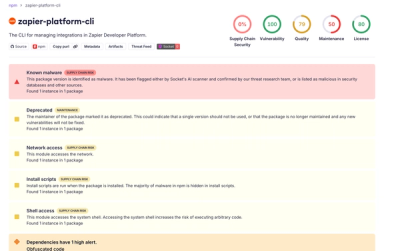@humanmade/react-slot-fill
This package is the SlotFill component from the WordPress Gutenberg project, broken out for standalone usage.
Licensed under the GPL. Copyright 2011-2020 by the contributors.
The original package's readme follows.
Slot Fill
Slot and Fill are a pair of components which enable developers to render elsewhere in a React element tree, a pattern often referred to as "portal" rendering. It is a pattern for component extensibility, where a single Slot may be occupied by an indeterminate number of Fills elsewhere in the application.
Slot Fill is heavily inspired by the react-slot-fill library, but uses React's own portal rendering API, exposed as an unstable API in React 16 and slated to be promoted to a stable API in React 17.
Usage
At the root of your application, you must render a SlotFillProvider which coordinates Slot and Fill rendering.
Then, render a Slot component anywhere in your application, giving it a name.
Any Fill will automatically occupy this Slot space, even if rendered elsewhere in the application.
You can either use the Fill component directly, or a wrapper component type as in the below example to abstract the slot name from consumer awareness.
import { SlotFillProvider, Slot, Fill, Panel, PanelBody } from '@wordpress/components';
const MySlotFillProvider = () => {
const MyPanelSlot = () => (
<Panel header="Panel with slot">
<PanelBody>
<Slot name="MyPanelSlot"/>
</PanelBody>
</Panel>
);
MyPanelSlot.Content = () => (
<Fill name="MyPanelSlot">
Panel body
</Fill>
);
return (
<SlotFillProvider>
<MyPanelSlot />
<MyPanelSlot.Content />
</SlotFillProvider>
);
};
There is also createSlotFill helper method which was created to simplify the process of matching the corresponding Slot and Fill components:
const { Fill, Slot } = createSlotFill( 'Toolbar' );
const ToolbarItem = () => (
<Fill>
My item
</Fill>
);
const Toolbar = () => (
<div className="toolbar">
<Slot />
</div>
);
Props
The SlotFillProvider component does not accept any props.
Both Slot and Fill accept a name string prop, where a Slot with a given name will render the children of any associated Fills.
Slot accepts a bubblesVirtually prop which changes the event bubbling behaviour:
- By default, events will bubble to their parents on the DOM hierarchy (native event bubbling)
- If
bubblesVirtually is set to true, events will bubble to their virtual parent in the React elements hierarchy instead.
Slot with bubblesVirtually set to true also accept an optional className to add to the slot container.
Slot also accepts optional children function prop, which takes fills as a param. It allows to perform additional processing and wrap fills conditionally.
Example:
const Toolbar = ( { isMobile } ) => (
<div className="toolbar">
<Slot name="Toolbar">
{ ( fills ) => {
return isMobile && fills.length > 3 ?
<div className="toolbar__mobile-long">{ fills }</div> :
fills;
} }
</Slot>
</div>
);



